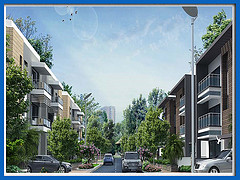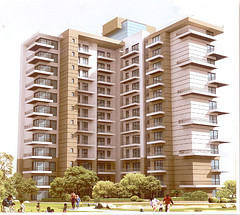A wide range of modern methods of construction (MMC) techniques and products have been developed, completely altering the construction industry’s behavior from what it was previously.
This incredible transformation brings about more and more developments in this sector.
What are Modern Construction Methods?
Modern construction methods (MMC) are developed in the construction industry with proper planning and design to reduce construction time and cost while maintaining overall sustainability.
Many methods are used and built in the current scenario. The most well-known and widely used modern construction methods are listed and explained below.
Modern Construction Methods Types
Among the various MMCs used in the construction industry are:
- Flat Panel Precast System
- Volumetric 3D Modules
- Flat Slab Building
- Panels of Precast Cladding
- Concrete Floors and Walls
- Concrete Precast Foundation
- Insulation for Concrete Formwork
Flat Panel Precast System
This construction method entails the process of fabricating floor and wall units off-site. Separate factory outlets and facilities are necessary for this. The panel units are manufactured according to the design specifications and requirements and brought to the site for installation. This method is best suited for construction project activities that continue.
Windows, doors, and finishes are available on the manufactured panels. This method includes factory-fitted building envelope panels with insulation and decorative cladding that can load-bearing elements.
3D Volumetric Construction
As the name implies, 3D volumetric construction entails the off-site production of 3D units consisting of modules. They are brought to the installation site and assembled module by module. Because each modular unit produced is a 3D unit, this construction is known as a 3D volumetric building or modular construction.
The modules can be transported in multiple ways or by various means. It can include transporting the basic structure or a completed unit with all internal and external finishes and services installed, with only the assembly remaining. The factory construction combines various items of the same product while maintaining quality throughout. As a result, this method works best for repetitive projects that require the goods to assemble quickly.
Flat Slab Building
Flat slabs are extremely versatile structural elements. Because of its versatility, it frequently appears in construction. The flat slab provides minimum depth and faster building. The system also includes adaptable column grids.
Flat slabs are a good choice where it is necessary to steal the partitions to the slab soffit due to acoustic and fire concerns. Flat slabs are faster and less expensive than other types of construction. When building on flat slabs, it’s possible to cover the soffit with a good surface finish. Flat slab construction also increases energy efficiency because it allows for utilizing building thermal mass when planning ventilation, heating, and cooling requirements.
Concrete Foundations Precast
Precast concrete is an option for quick foundation construction. This method is better suited for custom design. The elements required for the foundation’s construction are built separately in the factory (off-site), then transported to the site and assembled. The manufactured product must meet the quality standards specified by the designer.
Concrete piles serve as the primary support for the assembled foundation. Both systems connect during the assembly process. These foundation systems aid in increasing productivity, improving quality, and reducing the amount of soil excavated. It is best suited for extreme and adverse weather conditions. This construction system is the best choice when dealing with highly contaminated ground.
The technology of Twin Walls
The twin wall technology is a hybrid wall system that combines the erection speed and precast concrete qualities with the structural integrity of in-situ concrete. This particular wall system ensures the structure’s structural integrity and waterproof reliability. The twin wall system has two wall slabs. Lattice grinders cast in place separate the two slabs. The procedure involves:
- The job has a wall unit.
- The twin units are temporarily higher.
- Later, reinforcing serves to join the wall units.
- Concrete fills the space between the wall units.
This construction method is both faster and more cost-effective than traditional methods. The twin wall system has its main application in erecting precast floors.
Concrete Formwork Insulation
The insulating concrete formwork (ICF) system employs twin-walled panels that are either polystyrene panels or blocks. These swiftly come together to serve as the building’s formwork.
Concrete is the formwork that has emerged. This concrete is manufactured in a factory with quality assurance and is ready-mixed. The majority of the mix is ready-mix concrete.
Expanded polystyrene blocks provide a higher level of thermal insulation. The concrete core will provide strength and sound insulation.
Panels of Precast Cladding
The cladding system is the process of layering one material on top of another to form a skin or layer. This layering system is not only for aesthetic purposes, but it can also aid in controlling the infiltration of weather elements.
The cladding does not provide any kind of waterproofing. Instead, the cladding acts as a water barrier. It safely aids in the direction of water or wind, allowing runoff control. It helps to prevent infiltration into building structures.
Concrete Floors and Walls
Concrete walls are commonly used for seat walls, retaining walls, decorative exterior and interior finishes, and other structures. Concrete can also serve as a flooring material. Concrete floors can finish well using modern technology, creating smooth and appealing flooring. Concrete floors, perhaps more than any other material, offer an array of materials for applications such as acid-stained painted, radiant floors, overlays, and micro toppings.
Concrete flooring is also known as cement flooring. Concrete flooring is less expensive than other types of flooring and requires little maintenance. A dust mop is an option to clean properly sealed concrete flooring.



